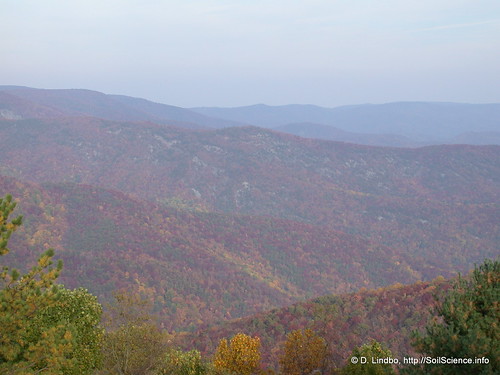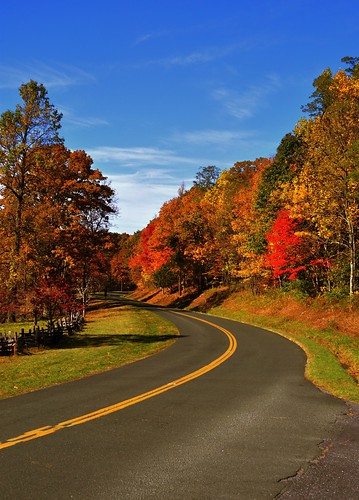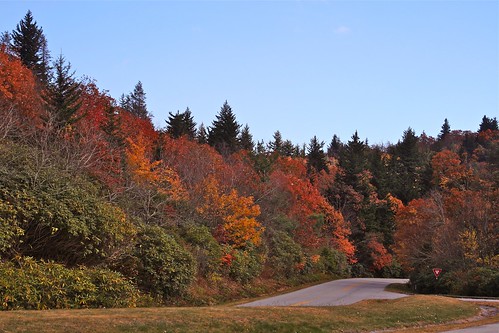 Autumn is my favorite season. Its cooling winds bring an end to the scorching summer sun. Three months of perfect weather before winter starts to show its fury. Fall also signals the beginning of soccer and football seasons, to the excitement of millions of eager fans. The best thing about autumn, however, is the changing of the leaves. Fall foliage is part of the beautiful way nature signals to humans that the season has begun. Oranges, yellows, browns, reds- these colors grace the treetops in various shades, slowly overcoming the green of summer.
Autumn is my favorite season. Its cooling winds bring an end to the scorching summer sun. Three months of perfect weather before winter starts to show its fury. Fall also signals the beginning of soccer and football seasons, to the excitement of millions of eager fans. The best thing about autumn, however, is the changing of the leaves. Fall foliage is part of the beautiful way nature signals to humans that the season has begun. Oranges, yellows, browns, reds- these colors grace the treetops in various shades, slowly overcoming the green of summer.
If you are looking for a simple day trip to take with your family or are planning a longer road trip to the northern states, consider driving through the Blue Ridge Parkway and taking in one of the best displays of autumn colors on the east coast. How did the Blue Ridge Parkway get its name, you may wonder. It is actually named for the bluish haze found on the mountains. This haze is created in part by the hydrocarbons released by the trees as well as the pollution mankind has caused to the earth.
 The Blue Ridge Parkway is a mountain roadway that spans 469 miles across both North Carolina and Virginia. It is also the habitat of more than 50 plants on the threatened and endangered species list. If you are in too much of a rush to get to your destination to stop and enjoy the beauty of nature, do not pick this route for your trip. The Parkway is meant to be taken at a relaxing pace, 45 miles per hour or less. At this lower speed, your family will be able to truly enjoy the assortment of colors offered during the autumn months.
The Blue Ridge Parkway is a mountain roadway that spans 469 miles across both North Carolina and Virginia. It is also the habitat of more than 50 plants on the threatened and endangered species list. If you are in too much of a rush to get to your destination to stop and enjoy the beauty of nature, do not pick this route for your trip. The Parkway is meant to be taken at a relaxing pace, 45 miles per hour or less. At this lower speed, your family will be able to truly enjoy the assortment of colors offered during the autumn months.
Planning your trip on the Blue Ridge Parkway does take a small amount of forethought. You need to check a few things before heading out to make sure your trip is not cut short unexpectedly. The first thing you should find out is if the weather will cooperate. The drive is beautiful, but long. Getting caught in a severe storm would make the trip more memorable, but it would also definitely take away the fun. You should also research any construction or road closures that could affect the route you plan to take and adjust your itinerary accordingly.
When packing for the drive through the Blue Ridge Parkway, keep in mind that the temperatures are always cooler in the mountains, sometimes as much as 15 to 20 degrees lower than what you would experience in the cities of the piedmont or valley areas. The elevation also varies along the road. While James River in Virginia is less than 650 feet high, you will find yourself at more than 6,000 feet near Mount Pisgah in North Carolina. Be sure to bring along a jacket, some blankets, and a few emergency supplies just in case you run into car trouble or anything else that forces you to stop along your way. 
Along your drive, you will spot multiple overlooks and trails. These offer drivers the chance to get out and stretch their legs as well as to get a closer look at colored leaves. You can also use these breaks as an opportunity to photography to glories of nature. A few well taken pictures can help you remember the trip for years to come. The fall color season hits its peak around mid to late October, but parts of the parkways are open all year long. Cars, motorcycles, and RVs are all welcome. The road consists of straightways as well as tight curves so it is important to keep aware of your surroundings and your speed, especially during rainy or foggy conditions.
Remember as you drive along the road through the southern mountains, take your time. Do not feel rushed if cars traveling behind you want to speed by. Just let them pass while you enjoy communing with nature. By taking the parkway at a slow pace, you will not only see a wide variety of colors, but you may also spot other environmental beauties such as deer, waterfalls, and birds flying south for the winter. Find more information on planning your trip through this mountain road by visiting the Blue Ridge Parkway webpage on the National Park Services’ site: http://www.nps.gov/blri/index.htm.

